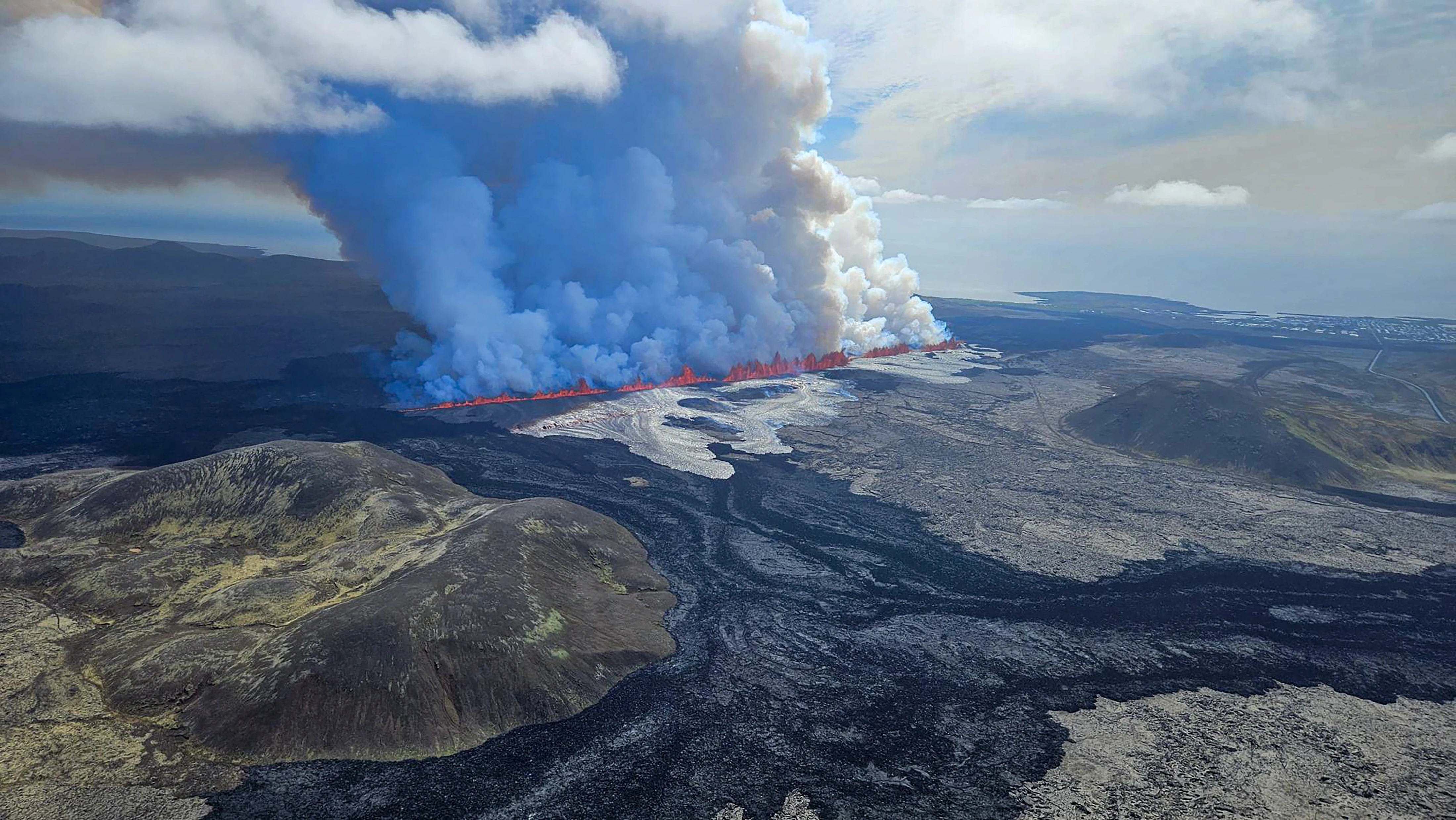Lava spews again from volcanic eruption in Iceland

Stay tuned with 24 News HD Android App

A new volcano erupted on the Reykjanes peninsula in southwestern Iceland on Wednesday, spewing fountains of red-hot lava into the air shortly after authorities evacuated the nearby town of Grindavik.
A large white cloud of smoke could be seen billowing up against the blue sky, with orange lava fountains bubbling out of a crack in the ground near Sundhnukagigar, north of Grindavik.
The eruption was the fifth in six months on the Reykjanes peninsula.
Two hours after the start of the eruption, lava was flowing less than a kilometre from a defensive barrier protecting the fishing village of Grindavik, the barrier itself located about another kilometre from the northern tip of the town.
Most of the 4,000 residents had evacuated Grindavik in November, prior to a December eruption.
Lava flowed into the town's streets during another eruption in January, engulfing three homes.
While the large share of those who were in the town on Wednesday -- for work or visits -- left immediately, a few die-hard residents refused to leave, the Department of Civil Protection and Emergency Management said on its Facebook page.
"Despite recommendations from response teams to leave the town, three residents remain in Grindavik. Such actions are not advisable," it said.
The nearby Blue Lagoon geothermal spa, Iceland's biggest tourist attraction known for its turquoise waters, said it had evacuated its facilities on Wednesday.
Maia Biegatch, a 28-year-old French tourist, had just arrived at the Blue Lagoon when the eruption occurred.
"We received alerts on our phones telling us to 'evacuate, evacuate', so we turned back," she told AFP.
"It was a total surprise."
The eruption was, however, not expected to disrupt air traffic, with the international airport Keflavik "open and operating in the usual way", airport operator Isavia said on its website.
"The eruption cloud reached an altitude of about 3.5 kilometres (2.2 miles) at the beginning of the eruption" and the length of the fissure was estimated at over one kilometre, the Iceland Meteorological Office said shortly after the eruption began at 12:46 pm (1246 GMT).
Around 90 minutes later, the Department of Civil Protection and Emergency Management said the fissure had extended to 3.4 kilometres.
The lava flow was heavy, estimated at between 1,500 and 2,000 cubic metres per second, the IMO said.
The eruption came almost three weeks after the end of a previous eruption that had been ongoing since March 16.
In the past six months, volcanoes have erupted on the peninsula in December, January, February and March.
- '400 earthquakes' -
The IMO had reported "intense earthquake activity" prior to Wednesday's eruption, with "about 400 earthquakes" measured in the past seven days near the Sundhnukagigar crater row.
In addition, it said some 20 million cubic metres of magma had accumulated in the magma chamber below Svartsengi, where a power plant that supplies electricity and water to around 30,000 people on the peninsula is located.
The Svartsengi plant was evacuated and has largely been run remotely since the first eruption in the region in December, and barriers have been built to protect it.
Until March 2021, the Reykjanes peninsula had not experienced an eruption for eight centuries.
Further eruptions occurred in August 2022 and in July and December 2023, leading volcanologists to believe the start of a new era of seismic activity in the region had begun.
Iceland is home to 33 active volcano systems, the highest number in Europe.
It straddles the Mid-Atlantic Ridge, a crack in the ocean floor separating the Eurasian and North American tectonic plates
